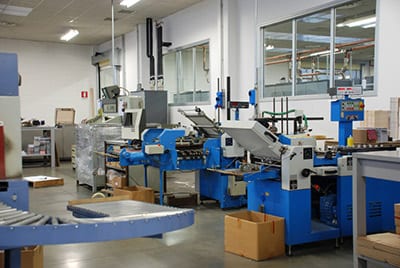4 Reasons You Should Think Twice Before You Skip the Primer
Priming Can Be as Important as Any Other Step in the Coating Process
Applying industrial coatings in manufacturing is one of the many steps to getting a product ready to ship. And though the coating process is just one of those many steps, the technology within the coating process may have a number of steps itself. For many products, one of the most important is priming the surface. Primers are meant to secure the durability of the topcoat when it is applied to a potentially incompatible, or less than optimal subsurface. They also bring valuable performance benefits to the final finish system.
Consider a multi-layer finish as something like a composite material. In a composite, each material adds desirable characteristics to strengthen the whole. So it often goes when using a custom primer on a finished product. Each layer of coating acts in concert to bring strong performance, environmental compliance and specification-surpassing durability.
There are times when primer is skipped. This may be due to time constraints, finish line restrictions or perceptions about the need for priming. Learn four reasons you should think carefully before you skip the primer:
1. Difficult Substrates
Different primers exist for the many different substrates. These include materials such as steel, aluminum, galvanized, brass and other metal alloys, paper, glass, wood, numerous plastics and polymers, etc. It is important to match the primer to the substrate.
Primers often act as a compatibility bridge between incompatible materials. Sometimes, the primer acts chemically to neutralize the underlying surface, to allow it to accept the final layers of coating. Other times, the primer brings qualities to the finish that are not available in the topcoat. Coatings formulators work closely with manufacturing, process and product experts to match the characteristics of the primer to both the underlying surface and the final topcoat.
2. Higher Performing Top Coats
The right primer can frequently lower the cost of an entire process. When the correct primer is applied, top coat application efficiency is enhanced. Appearance and aesthetics are better, as the primer acts to fill, level and reduce surface imperfections. Top coat film thickness can be reduced, extending the efficient use of topcoat material. Primers are often less expensive in comparison to the top coat. The primer is often the step for an imperfect surface to be prepared in a cost-effective way. Skipping the primer may reduce effective results in the long run.

3. Better Adhesion and Compatibility
A properly formulated custom primer creates superior adhesion between the base substrate material and the top coat on the finished product. Superior adhesion improves the longevity of the coating, reduces the possibility of top coat failure, and maintains resistance to the environment. The primer can act as an intermediate between otherwise incompatible materials, allowing the topcoat to adhere. The final customer will be satisfied, improving the business relationship.
One type of premature coating failure is peeling. If a customer experiences peeling, there may be a costly product recall. Insure against this situation by working with your coating supplier to select the correct primer and apply it using best practices.
4. Longevity & Quality
Topcoat durability is a function of many factors, but often it is UV light, moisture and abrasion that shorten the life of a topcoat. It is possible to formulate certain defensive characteristics into the primer, and allow the topcoat to work harder on other factors.
Sometimes, questions involving color and dry time are raised in regard to the use of primers. The correct primer has no detrimental effect on the color of the finished product. As for dry time, a primer is applied first as a separate step. A properly designed process need not be affected by the dry time of the primer. Further, if the right primer reduces the need for additional top coats, then overall process time may be reduced.
Not only does applying a primer save manufacturers money, but this simple step often avoids the headaches involved with coating failures. Primers should be considered with attention to particular substrate details, with an objective to reduce the number of top coats, to improve adhesion, and to enhance the quality and useful life of the manufactured products.
Do you have experience with the benefits of primers in your product lines? Please share your thoughts with us in the comments below!


